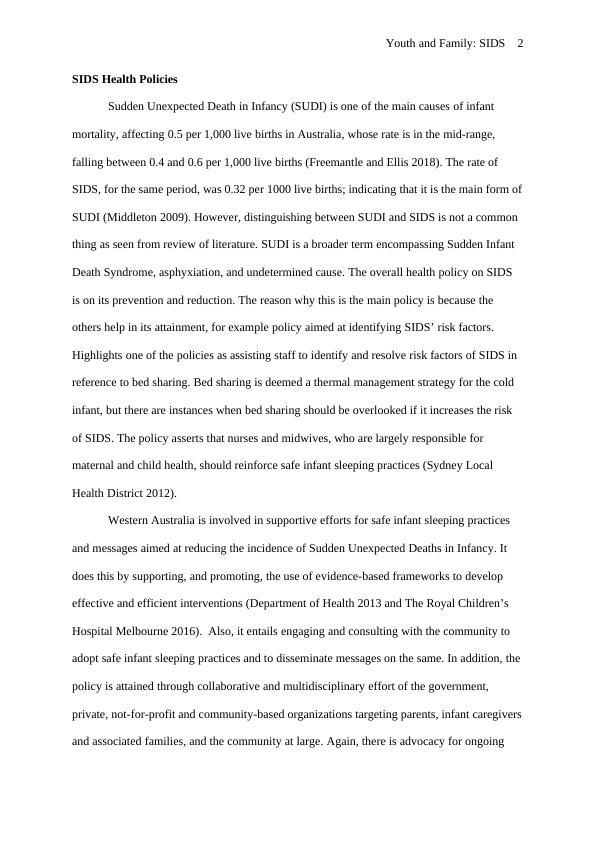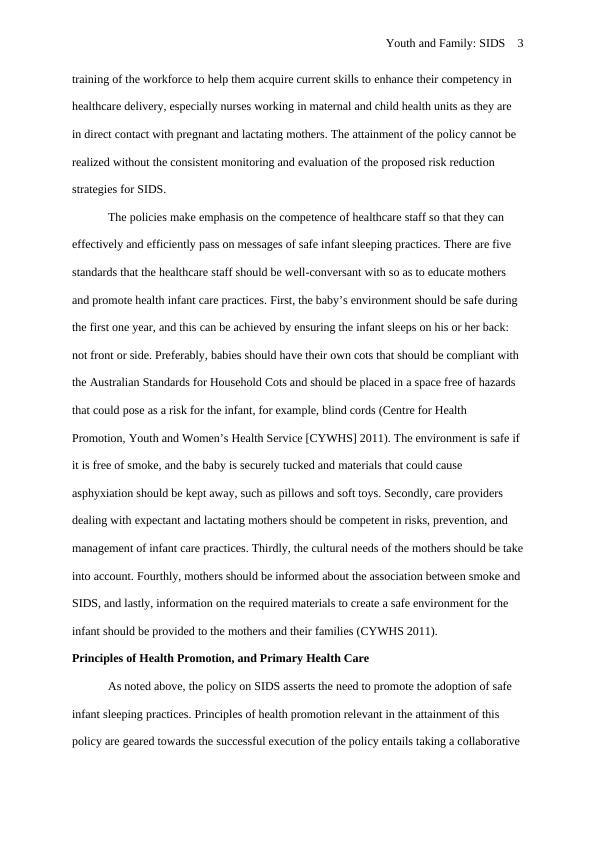Youth and Family: SIDS
Review and appraise a topic related to Aboriginal and Torres Strait Islander health, including discussing health policies, applying health promotion and primary health care principles, discussing advocacy, and applying principles of equity, rights, and access for Aboriginal and Torres Strait Islander families.
8 Pages2281 Words1 Views
Added on 2022-12-19
About This Document
This document discusses the health policies and prevention strategies for Sudden Infant Death Syndrome (SIDS) in youth and family. It highlights the importance of safe infant sleeping practices and the role of healthcare staff in promoting them. The document also addresses the equity, rights, and access issues faced by the Aboriginal and Torres Strait Islander population in relation to SIDS.
Youth and Family: SIDS
Review and appraise a topic related to Aboriginal and Torres Strait Islander health, including discussing health policies, applying health promotion and primary health care principles, discussing advocacy, and applying principles of equity, rights, and access for Aboriginal and Torres Strait Islander families.
Added on 2022-12-19
ShareRelated Documents
End of preview
Want to access all the pages? Upload your documents or become a member.
CHCECE005 Provide care for babies and toddlers
|38
|8590
|277
Postnatal Maternity Nurse Care
|10
|2624
|218
(PDF) Vulnerability and Marginalized Populations
|12
|3276
|182
CHCECE005 Provide Care for Babies and Toddlers - Assessment
|23
|3883
|470
Childcare: Transition from home to care, sleep routines, cultural needs, hygiene, nutrition, safety, and educator-child relationship
|5
|2202
|176
Environmental Toxins and Infants
|12
|535
|55



